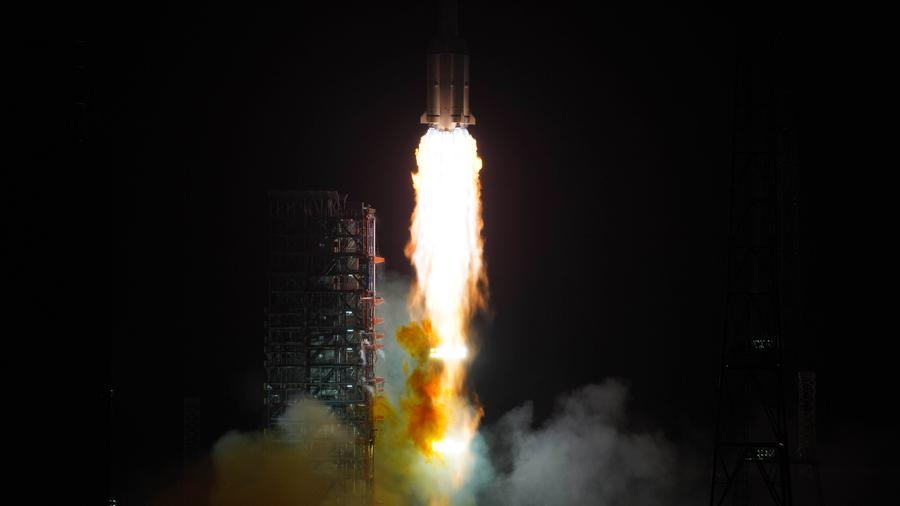ChinaSat-9C to strengthen satellite broadcasting services

A Long March-3B carrier rocket carrying the satellite ChinaSat-9C blasts off from the Xichang Satellite Launch Center in southwest China's Sichuan Province, June 20, 2025. (Photo by Xu Lihao/Xinhua)
BEIJING, June 21 (Xinhua) -- The newly launched ChinaSat-9C satellite will further bolster satellite broadcasting services and support the public cultural service system for radio and television, according to China Satcom, a subsidiary of the China Aerospace Science and Technology Corporation.
China sent the ChinaSat-9C satellite into space on Friday from the Xichang Satellite Launch Center in its southwestern Sichuan Province, using a Long March-3B carrier rocket. After completing in-orbit testing, the satellite will be handed over to China Satcom for operation and management.
Experts from China Satcom explained that as a dedicated broadcasting satellite, ChinaSat-9C features significant performance improvements, particularly in regional coverage capabilities.
"Whether in a nomadic tent on the plateau or a fishing boat's cabin at sea, a single satellite antenna enables information access across vast distances," said a China Satcom representative, highlighting how China's independently developed satellite communication network supports this capability.
The development of China's broadcasting satellites traces back to 1984 with the successful launch of Dongfanghong-2, the country's first geostationary broadcasting satellite that conducted pioneering TV and radio transmission experiments.
In 2017, China Satcom initiated a comprehensive upgrade program using the enhanced Dongfanghong-4 platform. This modernization effort saw ChinaSat-9B replace ChinaSat-9A in 2021, ChinaSat-6D succeed ChinaSat-6A in 2022, and ChinaSat-6E take over from the imported ChinaSat-6B in 2023. The newly launched ChinaSat-9C will completely replace the imported ChinaSat-9 satellite.
"Through continuous innovation, we've achieved domestic production of critical components including onboard batteries, momentum wheels and power distribution units," the representative noted.
China's domestically-produced broadcasting satellites have reached world-class levels in terms of both performance and service life, the representative added.
Currently, China Satcom's satellite fleet supports the transmission of over 200 standard-definition TV channels, nearly 100 high-definition channels, three ultra-high-definition channels and about 400 radio programs.
Photos
Related Stories
Copyright © 2025 People's Daily Online. All Rights Reserved.









